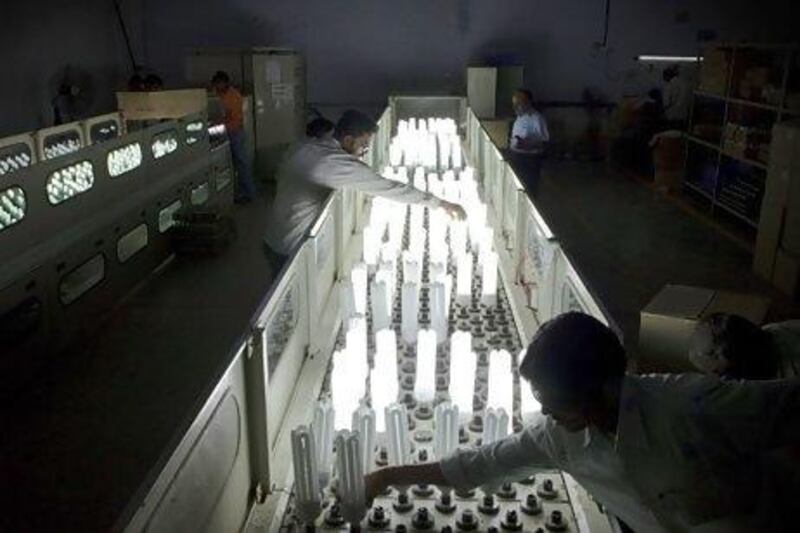Official figures being released this week are expected to show that India's economic growth slumped to its lowest level in a decade last year.
The country's GDP growth for the latest fiscal year is predicted to have fallen to about 5 per cent.
"The slowdown last year was broad-based [with] a continuing slump in investment, weak exports demand and a slow growth in domestic consumption," said Gaurav Kapur, a senior economist at the Royal Bank of Scotland (RBS) in India.
"Sector-wise, in the non-farm sector a protracted slowdown in manufacturing adversely affected the activity in the services sector too. The [agriculture] sector was adversely affected by bad monsoon rains."
RBS is expecting GDP growth for the fourth quarter to come in at about 4.8 per cent and at 4.9 per cent for the whole fiscal year, which ran from April last year to the end of this March. An advance estimate from India's Central Statistical Organisation pegged growth for last year at 5 per cent.
Those figures may seem high by comparison to the growth figures of many countries, but as a developing nation with a burgeoning population of more than 1.2 billion, the consensus is that India needs to achieve growth levels of about 8 per cent to create enough jobs for its citizens.
Economic activity is expected to pick up this year, but it will still fall well short of the growth needed by the country and the rise of 9.3 per cent recorded in 2011.
Last September, the government started stepping up its efforts to boost the economy. It took measures including opening up the retail and aviation sectors to foreign direct investment (FDI) and cutting fuel subsidies.
Even though India is now allowing foreign supermarket chains to enter the country with investment of up to 49 per cent, overseas investors remain wary.
"It has not had any major impact on the economy as yet," said Pragya Singh, the associate director, retail, at Technopak, a consultancy based in India.
"With multi-brand FDI, there were a lot of clauses on which it was allowed and it's left to the state to decide if they want to allow it or not - it's not even a pan-India policy. Obviously all multi-brand retailers will be very cautious and try to understand the policy in its entirety before taking any steps in that direction."
The ratings agency Standard & Poor's warned this month that India faces a one-in-three chance of having its credit rating downgraded to junk status, as budget and current account deficits remain high.
The elections coming up next year could also hold back the government from implementing policies that could prove unpopular.
And yet, a number of factors are working in favour of the Indian economy this year.
"The macro-economic environment has become more favourable for a cyclical recovery in the Indian economy this year," said Mr Kapur.
"The recovery however, would largely come towards the second half of the fiscal year," he added.
"With inflation easing, we already have seen the [central bank] reduce rates by 75 [basis points] in 2013. Lower oil and gold prices will help reduce the current account deficit and the fiscal deficit, curb inflationary pressures and create more room for lowering interest rates. The global economic environment has also improved to some extent, which is positive for India's exports.
A cyclical recovery can come about on the back of lower interest rates, easing inflation, normal monsoons and recent government measures to improve the investment climate."
But there is more that needs to be done. "Investment activity has to be revived significantly especially in the key infrastructure sectors and bottlenecks in the farm sector have to be addressed to ease inflationary pressures on a structural level," said Mr Kapur.
"Implementation of the goods and services tax regime would be another major reform towards reviving investment activity and improving tax compliance."





